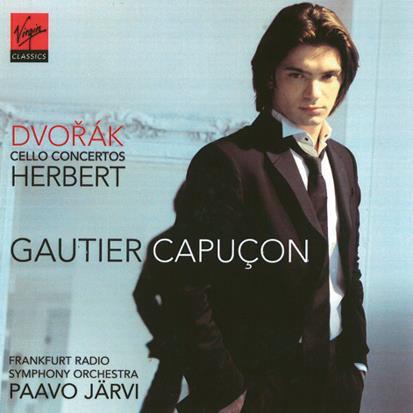
The Strad Issue: January 2009
Musicians: Gautier Capuçon (cello) Frankfurt Radio Symphony Orchestra, Paavo Järvi (conductor)
Composer: Dvorák, Herbert
Gautier Capuçon is not the first cellist to have paired these two concertos from 1890s New York, though I’m not convinced of the wisdom of showing up a mediocre work with a great one.
The 27-year-old performer, who won first prize in the André Navarra competition in Toulouse in his teens and went on to study with Heinrich Schiff, comes in all guns blazing in the first movement of Dvo?rák’s Concerto, with powerful bowing and a sense of heroic urgency. The theme’s lively, cross-string development is delightful and the second subject is held beautifully taut, but although the heroic spirit continues, Capuçon’s 1701 Gofriller cello often lacks the power to ride above the orchestra.
The Adagio includes some exquisite and tender playing. The passage following the horn quartet is particularly magical, with the cello solo rising in a beautifully shaped phrase, and the rich double-stopping gradually becoming more forthright and leading to some delicate portamentos in the top ranges of the instrument. The recorded sound is good, with the wind solos particularly skilfully highlighted.
It was Dublin-born composer and cellist Victor Herbert’s playing of his Second Cello Concerto in 1894 (clearly influenced by Saint-Saëns’s first) that apparently inspired Dvo?rák to write his own. The prominent role given to the soloist means that balance is not a problem here. The endless repetition of the rising sequence in the first movement gets a bit much, but Capuçon gives an elegant reading of the middle movement’s ballad-like theme and comes out on top in the showily virtuousic double-stops and spiccato acrobatics of the finale.
JANET BANKS
































No comments yet